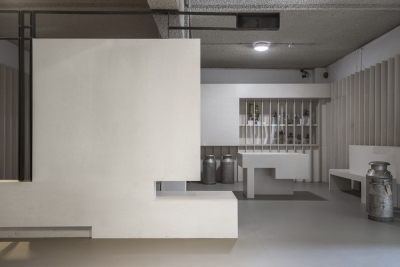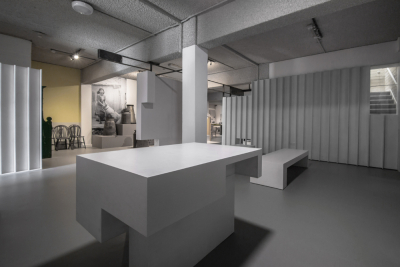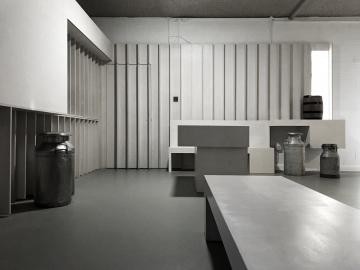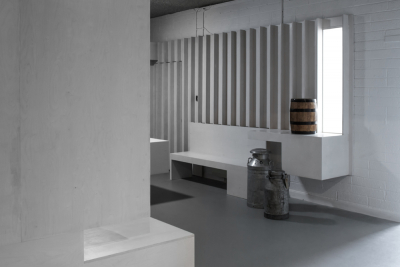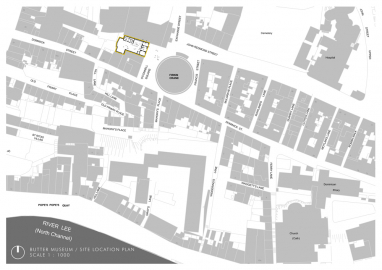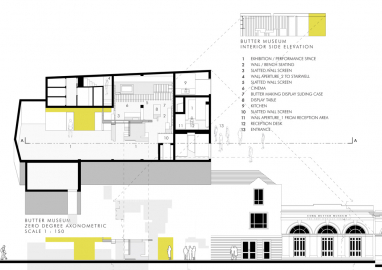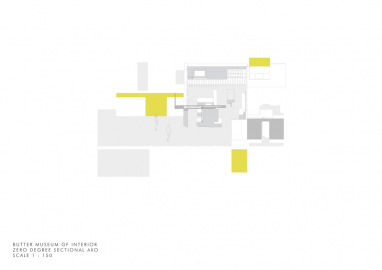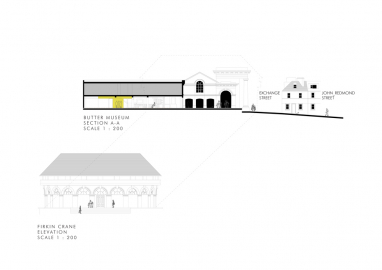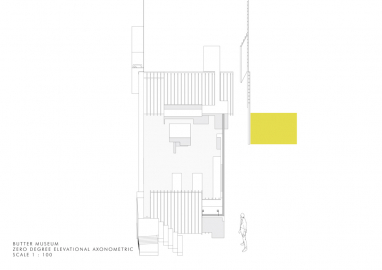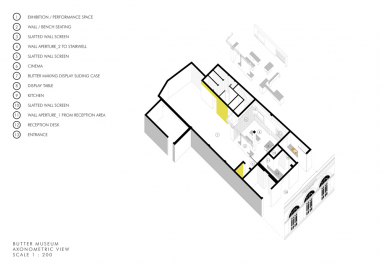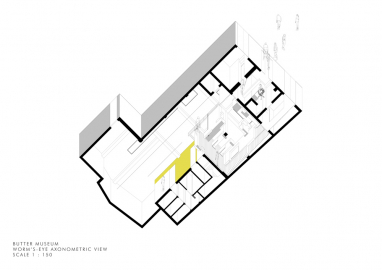[RE]work: The Butter Museum
These works consider the collection of artifacts and spaces in the Butter Museum. Reanimating a distinct historic urban field, they heighten the awareness of the socio-cultural roles of butter making in Ireland. The design erodes existing boundaries and alters spatial limits - encouraging new juxtapositions and readings between objects and viewers.
The Butter Museum is part of a distinctive urban arrangement in Shandon, Cork. It is close to St. Anne’s Church (1722) and is part of the original site of the Cork Butter Exchange – built in 1770 and added to by Sir John Benson in 1849 in the form of a monumental entrance portico with paired Doric columns. At street level, it is framed by the distinctive rotunda of the Benson-designed Firkin Crane (1855). Within this context, the design evolved as a [re]working and curatorial strategy - attempting to re-appraise the cultural and social historicities that are held in the Museum’s collection. This was achieved by connecting different exhibit areas through a series of new spatial ‘slits’ and the installation of cabinet-like elements that mediate the artifacts. In these ways, it allowed for distinct spatial ‘slippages’ between spaces - producing a space of ongoing performance.
The programmatic limits for the re-design of the Butter Museum were established so that it would act in the traditional sense of artifact display. Working between 'flatness' and 'depth', we adopted a tactical design approach and dual position. On one hand, it involved the installation of new critical services: a greeting space at the entry, a digital screening space, a live-demonstration area, and a working kitchen where glass butter-making instruments could be cleaned. This involved the subtle eroding of existing walls and boundaries and installing a number of cabinet-like elements – subtly detailed to evoke whitewashed domestic and agricultural settings. On the other, it was intended as a space of performance – where live traditional butter-making demonstrations could occur with groups of visitors and school children and where public events like dance or folk-singing could take place. It was for this reason, that the opening of the space was marked by a dance performance “IM-I AM” – choreographed and performed by Sara Hernandez –which reinterpreted the role of women in the history of butter making through bodily gesture and sound.
Untreated mild steel walls line interface points, and a seamless new recycled rubber floor surface connects the series of new cabinet-like elements with white-washed birch plywood skins – a thickened wall screen, benches, tables, and screens, and enact a choreographed exchange with the existing structure and artifacts. These figural elements have a pronounced sense of theatricality and enact a pas-de-deux between body and space that shifts the viewer’s relationship to the artifacts and objects in the collection. Because of the mobility of movement in a number of them, they create different spatial arrangements and emphasise the contingencies of the space. Manifesting a type of ongoing provisionality and compressed material range, they continually augment the space and generate different environmental qualities and atmospherical states - recalling the raw aesthetic and material settings associated with the production of butter. In these ways, the overall space becomes highly sensorial; where distinct performative sequences produce new transactions - between subject/object, body/space/atmosphere, and between urban space and history.

